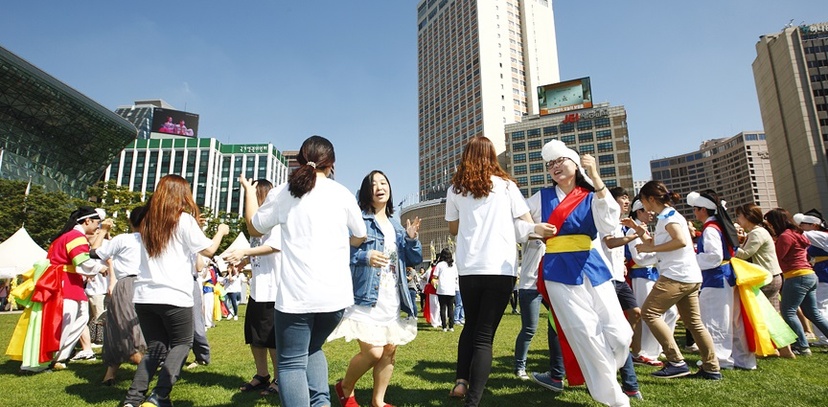
This year Social Life has been lucky enough to host SeonAe Kwon, who is on secondment in the UK from Seoul Metropolitan Government. SeonAe has spent the year working alongside the Social Life team sharing insights about Seoul City's work on social innovation and translating one of our key publications, Design for Social Sustainability, into Korean. The translation will be shared with housing and regeneration officers in Seoul's 25 boroughs and we hope to develop some practical collaborations with Seoul City in 2015.
Our collaboration with SeonAe has given the Social Life team some great opportunities to learn about Seoul City's work. SeonAe is returning to Seoul at the end of December and in January we will be welcoming a new secondee from Seoul, Youngwoo Jeon, who has spent this year working with Locality. Over the next few weeks Social Life will be publishing a series of blogs about what we have learnt from working with Seoul City.
Seoul's Community Support Center is one of the projects we have been following this year. The Community Support Center was created by Mayor Wonsoon Park in 2012 to encourage grassroots participation in neighbourhood initiatives and encourage a sense of local identity and belonging in Seoul's urban communities. Earlier this year Social Life Associate So Jung Rim, wrote about the growing popularity of the village ideal in urban Seoul: "The Korean word maul (translates to "village") is being redefined as something more than a physical space. It connotes a place where people are able to do the things that they value by developing new social relationships embedded in the localities where they live and operate."
"Maul-making" or "place-making" projects are increasing in Seoul. Neighbourhoods such as Samgaksan village and Sungmisan village started out as childcare cooperatives where families created a space for their children to grow up together; building a sense of shared history through various community, education and cultural activities. Some neighbourhoods began with the desire to build a children's library; others were set up to fulfil the artistic aspirations of the residents (music bands, theatre performance groups, artists). Some have a more environmental focus, while others attempt to restore trust in the community through cooperative housing models.
The common feature of these "villages" is the focus on local social connections to encourage community resilience, which in turn creates opportunities and avenues for residents to thrive and realize their capabilities.
Seoul's interest in village communities is not dissimilar to the UK government's focus on encouraging the development of neighbourhood social capital as a means to support attachment, belonging and local wellbeing. These are central themes in Design for Social Sustainability, which sets out a framework for thinking about the social dimensions of community life and how these ideas can be translated into practical initiatives. The work is based on the findings of Future Communities, an action research programme run in partnership with the Homes and Communities Agency, a UK-government agency, and a group of local authorities, to bring together evidence about what makes new housing settlements thrive or fail.
Design for Social Sustainability is the starting point for many of Social Life's projects and in 2015, building on our collaboration with Seoul and projects in Malmö (Sweden) and Chicago, we will launch the Social Life of Cities Collaborative, a new programme of work on cities and urban social innovation with the Social Innovation Exchange.